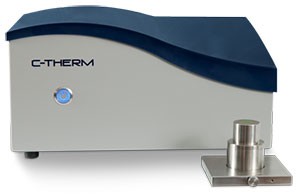ASTM New Method for Textile Thermal Effusivity

Textile industry, once became the sunset industry, under the efforts of developers in the field, Taiwan opened a complete new bright sky in textile industries. Today, there are about 70% of functional fabrics are made from Taiwan textile companies. Functional textiles, refers to natural or synthetic fibers, by special process, and apply the specific functions onto it, such as anti-UV, thermal insulation, waterproof, windproof, antibacterial, deodorant, etc. The common functional textile products, such as anti-crepe shirt, quilt, breathable shoes, sportswear wicking, thermal underwear.
ASTM just published a new thermal conductivity measurement method, ASTM D7984. It is designed towards to functional fabrics, functional textiles, functional clothes, and it's developed of the thermal conduction measurements. The manufacturers can use the Modified Transient Plane Source (MTPS) to measure the thermal effusivity characteristics of textiles. By using an thermal conductivity analyzer one can measure the thermal characteristics of textiles, and further measure its heat isolation, heat conductivity performance and quantization of heat.
ASTM D7984 can help cloth manufacturers, fabric manufacturers, to test the thermal performance or heat dissipation performance of fabrics, or clothes, so that consumers can feel more comfortable and warmer from those functional textile. In the past, thermal conductivity is usually tested by the conventional methods, such as steady-state method, laser flash method, hot wire methods. However, these methods are not useful in simulating the interaction of human skin and functional fabrics. MTPS, to which implemented a one-sided, interfacial, heat reflectance sensor and it applies a momentary, constant heat source to the sample. It brings a faster, yet non-destructive measurement method, as well as a nature support to the sample (sample is placed onto the sensor). The researcher only need to simply place the sample onto the holder (sensor), the measure can be started immediately. By this design, you can also measure the form of the samples in liquid, powder, or paste.
The results measurement of thermal conductivity, comes with the unit of W · m-1 · K-1. It can describe the thermal diffusivity rate of fabric materials. Fabrics with a low thermal effusivity would feel warmer to the initial touch and would be slower to transfer heat away from the body, thus keeping the wearer feeling warmer. Conversely, for summer apparel, in which someone wants to stay cool, a higher thermal effusivity is desirable, as fabric will quickly draw heat away from the skin on initial contact.
ASTM D7984 standard will be useful to textile mills as a benchmark test method to compare and develop new technologies for managing heat. At the same time, clothing developers will benefit from an objective method for evaluating how fabric manages heat from the body.
ACTTR brought to you the best thermal conductivity analyzer, C-THERM TCi. It is an advanced, high performance instrument. It can help you a lot in the daily research works!


